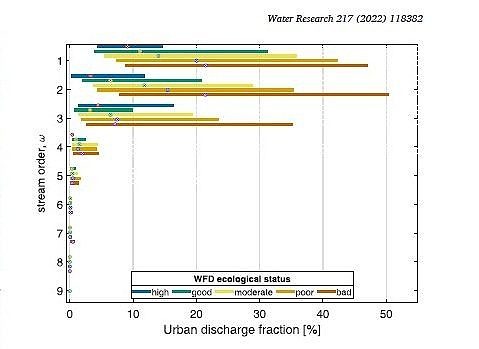Our new paper asks why less than half of European rivers and streams are in good ecological status, despite decades of intense regulatory efforts. Why have ecological targets for the majority of water bodies in Europe not been met despite decades of water protection programs? We used data from across Germany (Buettner et al. 2020) and then across all of Europe (Buettner et al. 2022) to identify causal factors.
We conclude that low-order streams are highly vulnerable to urban wastewater discharge. Across Europe we found that ecological status in streams declined consistently with increasing urban wastewater discharge fraction of stream flow across river types and basins. From a continental-scale logistic regression model (accuracy 86%) we identified an ecologically critical threshold UDF = 6.5% ± 0.5. This is exceeded by more than one third of wastewater treatment plants in Europe, mostly discharging into smaller streams. Our results suggest that new receiving water-specific strategies for wastewater management are needed to achieve good ecological status in smaller streams. Concentrating integrative restoration efforts in low-order streams would maximize the potential to mitigate anthropogenic impacts.
Figure 1. Less than 8% of German rivers are in ecological status of good or better.
Figure 2. Across all European streams (Strahler order ω≤3), increasing pressure from WWTPs (based on median UDF) is associated with a consistent decline in ecological status.


